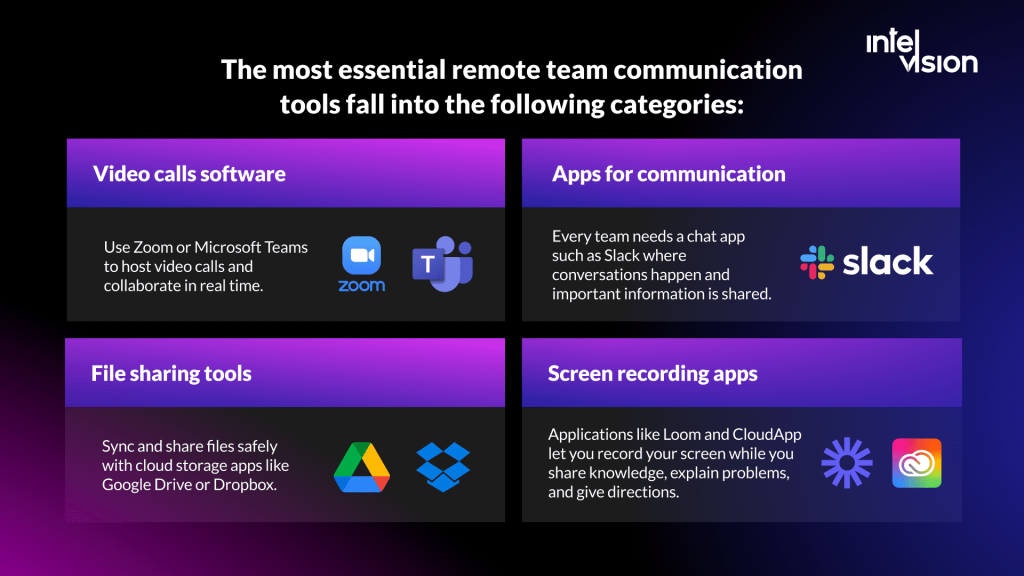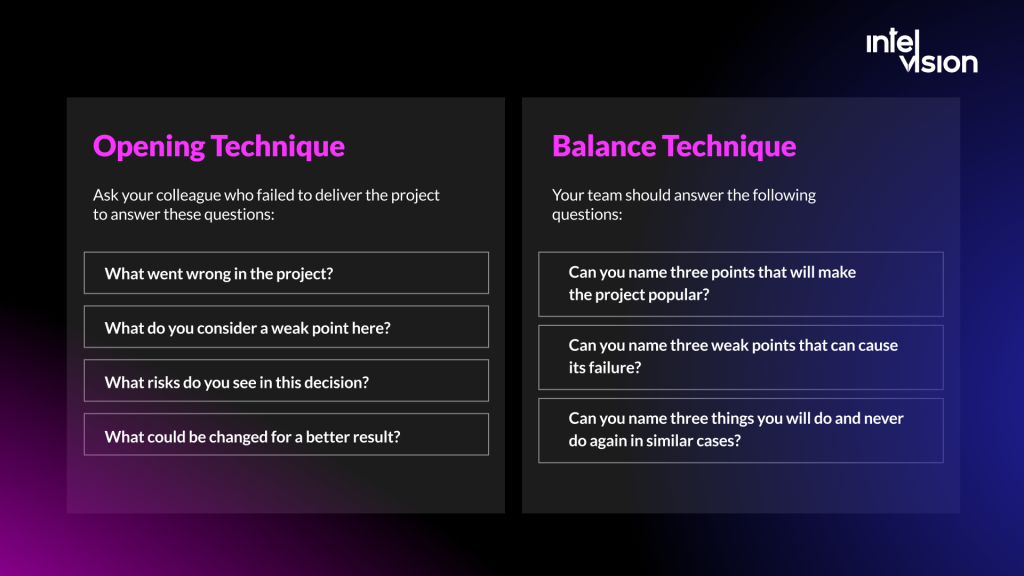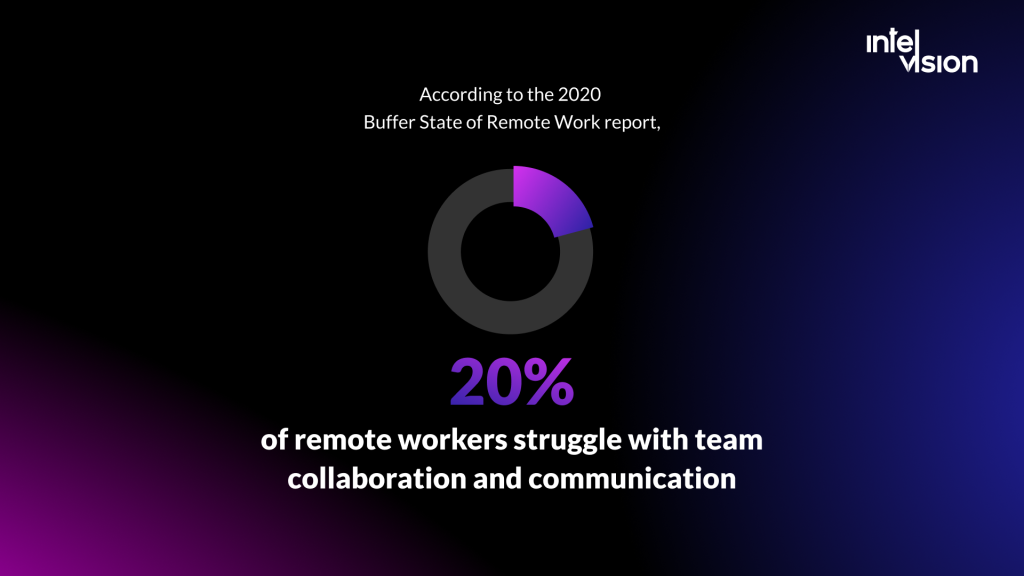
9 Remote Team Communication Strategies You Shouldn’t Ignore
According to the 2020 Buffer State of Remote Work report, 20% of remote workers struggle with team collaboration and communication. At the same time, challenges like miscommunication and ineffective online meetings affect remote teamwork.
The good news is that with the right strategies your remote team can improve how they communicate. In this article, we explain the importance of remote team communication, explore nine methods you can use to communicate remotely, and provide tips, tricks, and communication best practices for remote teams to help you find your confidence in situations where effective communication is essential. We’ve also recently highlighted in our blog how to build a remote team. Check it out for more details and useful insights.
What is Remote Team Communication
Remote team communication represents different ways that companies use to communicate. It includes email newsletters, corporate software, virtual game nights, holiday communications, and all the other ways you encourage remote employee engagement.
Before we share some effective communication ideas for your remote teams or team extension model, it is crucial to understand these different types of the distance involved in remote communication:
- Physical distance: represents the spatial distance separating IT team members.
- Operational distance: different departmental structures, employee skill levels, and know-how that can interfere with communication.
- Affinity: problems preventing software development teams from building trust and solid relationships.
By identifying the types of distances that exist across your tech company, you can develop more customized strategies and choose remote communication tools for team communication and effective remote team working.
Why is Communication Important in Remote Teams
Working in an office enables communication at multiple levels and in different ways. There are far more opportunities to talk, discuss, and observe. Last but not least, company leaders and team members know how to make the most of an office environment.
Your team members see and interact with each other every day in the office. It builds a close relationship between them. Discussion rooms with whiteboards and projectors help people express themselves clearly to their team members. There is a water cooler and a pantry for informal chats about everything.
Read also: Remote Work vs Office: what are the main pros and cons and how it works at Intelvision.
Large companies even deliberately design their offices in such a way that members of different dedicated development teams and departments cross paths as often as possible: for example, on the way to the corporate canteen or a WC. This way, they are more likely to discuss working details and can come up with cool decisions about the company’s products and solutions. There is even such an expression in the corporate world: the most innovative ideas are born near the coffee machine.
Now compare that to how your team operates while working remotely. They do not get to see and meet each other. There is no place to hang out. People are physically separated and also not emotionally as connected as teams in the office. Team members may even live in different time zones making it difficult to define common working hours for everyone.
There are obvious issues while communicating with remote teams such as the speed of communication which is also different in a remote workplace. Remote teams need a different mindset, processes, and the right tools to communicate effectively.So how do you overcome these challenges and improve remote team communication? Following strategies we will discuss in our blog post.
The Key Remote Team Communication Methods to Follow in 2023
Remote teams can use a variety of tools and strategies to communicate online. Here are nine methods your team can try:
Remote Team Communication Tools
How to stay in sync even across 5+ countries and different time zones? Invest in communication software all remote employees will use. With its help, you’ll be able to send messages, share ideas and documents, and ask for help or feedback. These communication tools are most effective if team members remain logged into them throughout the workday and can respond immediately to their colleagues’ messages. The software also helps keep remote teams more organized.
The most essential remote team communication tools fall into the following categories:
- Video calls software: Use Zoom or Microsoft Teams to host video calls and collaborate in real time.
- Apps for effective team communication: Every team needs a chat app such as Slack where conversations happen and important information is shared.
- File sharing tools: Sync and share files safely with cloud storage apps like Google Drive or Dropbox.
- Screen recording apps: Applications like Loom and CloudApp let you record your screen while you share knowledge, explain problems, and give directions.

Threads
Threads organise conversations by topic inside public communication channels and allow you to tag the specific teammates who you need to weigh in.
- Status updates.
- Bug reports.
- Project ideas.
- First drafts, mockups, prototypes, specs, and more.
- Troubleshooting & problem-solving.
- Decision-making.
- Weekly snippets.
- Announcements.
You can also have just-for-fun communication channels in your company that resemble something like subreddits—for example #Music and #Book Club.
Video calls
Communicating through video is way more efficient than messages or email newsletters. Video calls also allow you to analyze employees’ facial expressions and tone of voice. In the end, when communicating via video, remote employees will be much less tempted to scroll through the Instagram or TikTok feed. Specialists will be more focused and engaged in dialogue and may even be able to share some interesting ideas about your company’s products.
One-to-one text messaging
Tech experts need to be able to discuss details in a private environment. The best way to do that in a remote team is to use the right tools that allow people to communicate with each other outside the group. It could be Slack, messenger, or custom communication tools tailored to the specifics of your business. So you get a software solution that perfectly matches your business needs in general and the team in particular.
Activity reports
Managers can use digital activity reports to track employees’ progress. Each specialist lists their activities for the day or a week as well as the status of the projects they are working on. This form of communication allows you to monitor the team’s progress without scheduling additional online team meetings.
According to PMI’s Pulse of the Profession report, approximately 48% of all projects are not completed on time. A clear project schedule with all related tasks and deadlines, as well as performance monitoring, will allow the project manager, stakeholders, and the entire software development team to monitor the pace of progress: are you on schedule, what has already been done, what are the next control points, what are the priorities to move in order to have time to complete the project in the discussed term, etc.
Recordings
Record meetings, emails, visualizations, and video conferences so you can share them with team members or remind yourself what you discussed. Most video communication program solutions have the option to screen-record. Organize your recordings by topic and date so you could find and share them easily.
It won’t be superfluous to transcribe speeches into text as well. For this purpose, you can use specialized software or AI-based platforms such as VEED, Media.io, Auris AI, Cockatoo, and more. For example, the AI-based converter Cockatoo is used by thousands of users worldwide such as American Express, University of Cambridge, and Lyft.
It automatically transcribes any standard audio or video file (mp3, mpeg, mp4, wav, acc, mov, etc.) format with people talking in it in the file. As a result, you can export our transcript to pdf, docx, txt, and srt files. The transcription service guarantees 99% accuracy.
Constant Feedback
It is critically important to provide your tech team with constant feedback. However, any feedback forms will not work here. People in general and specialists in certain professions have different perceptions of feedback.
For example, according to statistics, representatives of creative professions (for example, designers and copywriters) are more susceptible to criticism. They even can be blocked from further remote work on the project after the feedback. We’ve put together some effective techniques and tips to help you with providing balanced but constructive feedback to your software development team.
Criticism of the Results, Not Personal Competencies
Feedback should not mention any employee’s personal qualities. It is better to discuss a specific result instead. For instance, “You always come up with unique ideas. However, with the last task, it feels like you have not made a thorough analysis. Can it be that you didn’t have enough time to analyze the subject better?” Such feedback will likely be perceived as an opportunity to change something.
Opening Technique
To apply this technique, ask your colleague who failed to deliver the project to answer these questions:
- What went wrong in the project?
- What do you consider a weak point here?
- What risks do you see in this decision?
- What could be changed for a better result?
Balance Technique
It helps the team objectively evaluate the decision and see its positive and negative sides. To implement the Balance Technique, your team should answer the following questions:
- Can you name three points that will make the project popular?
- Can you name three weak points that can cause its failure?
- Can you name three things you will do and never do again in similar cases?

Use virtual team-building activities
Loneliness can cause disengagement, a drop in performance, and even employee burnout. To break it, build personal and social bonds between your remote workers. Just like there are team-building activities for people working in an office, there are activities for team-building in remote teams.
Celebrate individual and team achievements
When in office, we celebrate all kinds of things such as birthdays, festivals, sports events, and achievements. But most remote teams forget to do that as it is hard to organize. However, the most effective remote teams find a way to do it, even if it is just singing a Happy Birthday song.
Celebrate individual and team achievements. Send physical cards/gifts. Celebrate small and big victories. It is a vital experience to go through. More importantly, it is crucial to discuss all the ups and downs of the accomplished project with the tech team and reflect together on the lessons learned.
Remote Team Communication Tips That Will Positively Affect the Team Productivity and Your Profit
To ensure your team’s remote communication efforts are effective, here are tips to follow:
1. Start the team meeting by assessing the situation with the project. Report how things are going in general. And you can do this in different ways if there are problems on the project:
“There is one detail blocking the work…” When an employee hears this, he concentrates better on the subject. He already understands that he will need to find a solution to the problem. From the first minutes, he is ready for brainstorming and listens attentively.
“There are two pieces of news: a good one and a bad one…” The person is ready to hear bad news, but he/she understands that there will be good news, too. It arouses interest and sets up a conversation.
2. Simplify. People often try to show how smart they are using professional terminology and industry jargon. In fact, it doesn’t work. Exec|Comm polled 1,800 business people about communication skills that impress them the most. “Using complex words” was not chosen by any person.
3. Send short emails and messages in the corporate channels. When it comes to written communications, try to be as concise as possible. Nobody likes to read long letters, so every word should be meaningful. Remove extra words and phrases: “At the moment, we have 40 employees in our team” -> “40 employees are working in our team”. “During this month” can be shortened to “This month”. And “As I said” can generally be removed in 99% of cases. Also, break your text into paragraphs. Try to keep them to no longer than a quarter of a page. Anything longer visually puts pressure on the reader.
4. Show empathy. Assure the remote employees that you are available to help anytime.
5. Encourage remote workers to share constructive feedback. Provide IT experts with an opportunity to exchange their views and stances freely.
Chapter and Verse
Your IT teams can stay close together even when they are apart! We certainly have not solved all the communication challenges at Intelvision. However, we’ve developed a system that:
- Connects every team member directly to the people and data they need to do their jobs.
- Eliminates the missing out of important information.
- Allows everyone to focus on work that creates a meaningful impact for our clients.
Whether you work with a fully distributed team or simply have a workplace where people often work from home, we hope this article has given you ideas for how to make remote communication work for your tech team.











![$portfolio_img_mobile['title'] $portfolio_img_mobile['alt']](https://intelvision.pro/wp-content/uploads/2021/03/Group-892-262x350.png)









